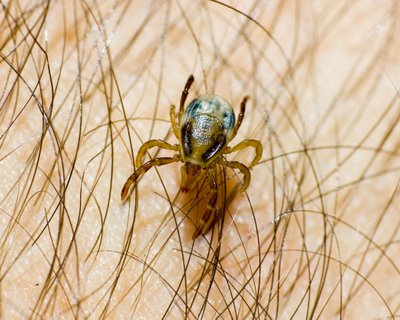 In a previous post I showed a photo that, it turns out, is of an adult female paralysis tick, Ixodes holocyclus.
In a previous post I showed a photo that, it turns out, is of an adult female paralysis tick, Ixodes holocyclus.I realised how little I knew about these guys - everyone's heard of the name and has some sort of fear of getting one, but what's the actual danger?
It tuns out that there's three things that may be problematic. The first is the obvious one - paralysis.
When the tick feeds, it releases a toxin from its salivary glands that spreads from the site of the tick bite. This toxin interferes with the motor neurones and the signals they send to the muscles. So the muscles can't contract - paralysis.
Remove the tick and the problem goes away quite quickly. But it may have left behind some nasty pathogens.
There's rickettsia - a bacterium-like organism that causes 'tick typhus' or 'spotted fever'. Doesn't sound too terrible: rashes, fever and flu-like symptoms.
Another possible problem is Lyme disease, caused by a bacterium, though it's not actually confirmed in Australia. Both of these diseases can be treated with antibiotics.
The final thing that ticks may cause is an allergic reaction, and this may be pretty severe, even life-threatening in the case of anaphylaxis.
Take a look at these links on paralysis ticks for more information:
Sydney uni medical entomology
Tick Alert Group Support



1 comment:
That rickettsia sounds like what one of my cousins got about a year ago on a weekend down the coast... and she's still paying for it every now and then with the rashes and general flu symptoms.
Nice site BTW, I often check in on yer latest pics :)
Post a Comment